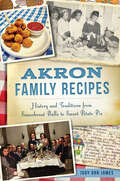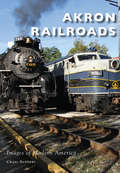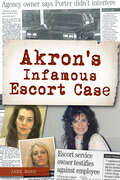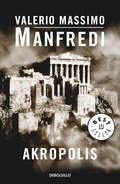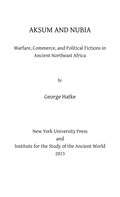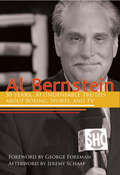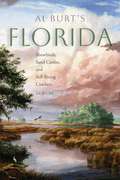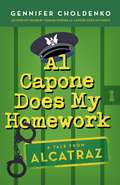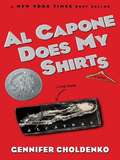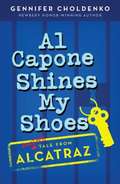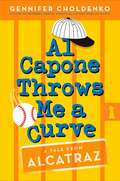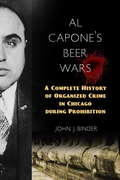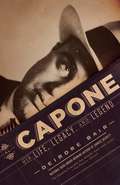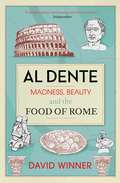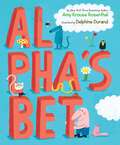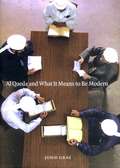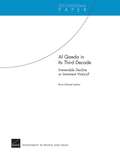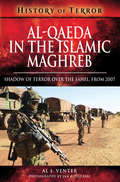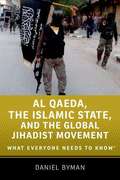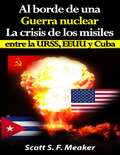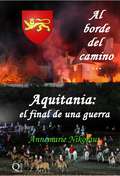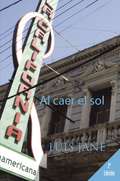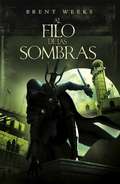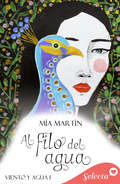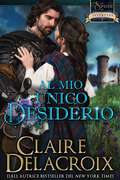- Table View
- List View
Akron Family Recipes: History and Traditions from Sauerkraut Balls to Sweet Potato Pie (American Palate)
by Judy Orr JamesCompiling more than 100 family recipes, founder of the Akron Recipe Project Judy Orr James serves up a history of home cooking in the Rubber City. From the city's founding in 1825 through the years following World War II, numerous ethnic and cultural groups made Akron home. With each new arrival, the city's food changed and deepened to delicious effect. Polish immigrants brought pierogi to the area, and Jews introduced Old World favorites like kugel and hamantaschen. African Americans seeking a better life in the North enriched the Akron palate with the unique and southern-inspired dishes of their ancestors. Last but not least, there is the sauerkraut ball, Akron's official food and favorite snack served at local restaurants, cocktail parties, holiday celebrations, and game day gatherings.
Akron Railroads (Images of Modern America)
by Craig SandersThe self-described "rubber capital of the world," Akron was the home of numerous rubber factories that made tires for America's burgeoning automobile industry. Many of the raw materials needed to create rubber arrived by rail, and the finished products moved to market in freight cars. The city's major railroads included the Baltimore and Ohio, Pennsylvania, and Erie Railroads, but three regional carriers, the Akron, Canton and Youngstown, the Wheeling and Lake Erie, and the Akron and Barberton Belt, also served Akron-area industries. Written in cooperation with the Akron Railroad Club, this book chronicles the ever-changing Akron railroad scene since the club's founding in 1936.
Akron's Infamous Escort Case (True Crime)
by Jane E. BondIn the late 1990s, the Akron Vice Squad began Operation Red Light to investigate two local escort services. Little did it expect the political and legal storm its actions would unleash. Soon everyone wanted to know who was on the list of clients. Were th
Akrópolis (Bestseller/debolsillo Ser. #Vol. 496)
by Valerio Massimo ManfrediUn viaje apasionante por los momentos y lugares álgidos de la historia de Atenas. Homero, Pericles, Fidias... Al leer estos nombres, las sombras fascinantes de un gran pasado vuelven a nosotros, pero no siempre es fácil colocarlas en su justo lugar. Al escribir Akropolis, Manfredi ha querido acompañar al lector en un viaje apasionante que recorre los lugares y los momentos álgidos de la historia de Atenas, desde la creación mítica de la ciudad hasta la muerte de Sócrates. Hija de los hombres y patria del hombre, el alma de Atenas toma nuevo aliento en las páginas de Akropolis a través de las grandes gestas que marcaron su trayectoria hacia el poder, pero también a través de la palabra de sus ciudadanos más humildes, de las intrigas domésticas y del sabor de sus vinos y manjares. Gracias al amor de Manfredi por los detalles y a su habilidad para unir pasado y presente con los hilos de la emoción, Akropolis va tejiendo un tapiz armónico y lleno de color, donde se dibujan los rostros de una historia mágica que ha marcado los pasos esenciales de nuestra civilización.
Aksum and Nubia: Warfare, Commerce, and Political Fictions in Ancient Northeast Africa (ISAW Monographs #2)
by George HatkeAksum and Nubia assembles and analyzes the textual and archaeologicalevidence of interaction between Nubia and the Ethiopiankingdom of Aksum, focusing primarily on the fourth centuryCE. Although ancient Nubia and Ethiopia have been the subjectof a growing number of studies in recent years, little attention hasbeen given to contact between these two regions. Hatke arguesthat ancient Northeast Africa cannot be treated as a unified areapolitically, economically, or culturally. Rather, Nubia and Ethiopiadeveloped within very different regional spheres of interaction, asa result of which the Nubian kingdom of Kush came to focus itsenergies on the Nile Valley, relying on this as its main route ofcontact with the outside world, while Aksum was oriented towardsthe Red Sea and Arabia. In this way Aksum and Kush coexistedin peace for most of their history, and such contact as they maintainedwith each other was limited to small-scale commerce. Onlyin the fourth century CE did Aksum take up arms against Kush,and even then the conflict seems to have been related mainly tosecurity issues on Aksum’s western frontier.Although Aksum never managed to hold onto Kush for long, muchless dealt the final death-blow to the Nubian kingdom, as is oftenbelieved, claims to Kush continued to play a role in Aksumite royalideology as late as the sixth century. Aksum and Nubia criticallyexamines the extent to which relations between two ancient Africanstates were influenced by warfare, commerce, and politicalfictions.Online edition available as part of the NYU Library's Ancient World Digital Library and in partnership with the Institute for the Study of the Ancient World (ISAW).
Al Bernstein: 30 Years, 30 Undeniable Truths About Boxing, Sports, and TV
by Al BernsteinThe legendary cable television sports broadcaster takes a humorous look back on the fight game—as seen from a ringside seat. For more than thirty years, Al Bernstein has been one of the most recognizable and respected sportscasters in America. In those three decades, the &“voice of boxing&” reported the funny, poignant, and bizarre events that helped shape sports television, ESPN, boxing, Las Vegas, and SHOWTIME. With an eclectic cast of characters that includes every big name in boxing, including Marvin Hagler, Mike Tyson, Floyd Mayweather and Manny Pacquiao, as well as such names in the entertainment world as Rodney Dangerfield, Sylvester Stallone, Russell Crowe, and Jerry Lewis, Bernstein&’s memoir will have you in stitches.
Al Burt's Florida: Snowbirds, Sand Castles, and Self-Rising Crackers (Florida History and Culture)
by Al BurtFlorida Trust for Historic Preservation Award Florida Historical Society Patrick D. Smith Florida Literature Book Award A tour of twentieth-century Florida through the writing of a roving reporter"Some say that Floridians lack a sense of place—they won’t after reading Al Burt."—Ann Henderson, Former executive director, Florida Humanities CouncilAs a roving reporter for the Miami Herald from 1973 to 1995, Al Burt traveled all of Florida, studying it with the insight of a native and the detached eye of the foreign correspondent he had been. During those years, he observed connections with the state’s past and speculated about its future, and, while he was at it, took note of the human frailties and heroisms he witnessed every day. Al Burt's Florida is like a family portrait, a loving but not uncritical view of a complex and fascinating state.Burt's portrait combines vignettes of notable Floridians—some famous at the time, like Ed Ball, but most better known locally—with those of the state’s many special places: Okeechobee in the teens and twenties, Miami Beach in the fifties (when dinner in Havana was only a $26 plane ride away), Wakulla Springs when it served as Johnny Weismuller’s Tarzan movie set, modern-day Tallahassee with its formality and grace.Al Burt himself emerges from this landscape as the remarkable, engaging, and passionate Floridian he is. He takes us in hand, starting from his headquarters in the north Florida scrub, on a tour of the charm, substance, and fantasy of Florida, yesterday and today. And always, he dwells with greatest affection on the smaller places, the real places, the anchors of old Florida—and on those folks who do their best to preserve them. In the process he captures a sense of Florida as home.A volume in the Florida History and Culture series, edited by Raymond Arsenault and Gary R. Mormino
Al Capone Does My Homework
by Gennifer CholdenkoAlcatraz Island in the 1930s isn't the most normal place to grow up, but it's home for Moose Flanagan, his autistic sister, Natalie, and all the families of the guards. When Moose's dad gets promoted to Associate Warden, despite being an unlikely candidate, it's a big deal. But the cons have a point system for targeting prison employees, and his dad is now in serious danger. After a fire starts in the Flanagan's apartment, Natalie is blamed, and Moose bands with the other kids to track down the possible arsonist. Then Moose gets a cryptic note from the notorious Al Capone himself. Is Capone trying to protect Moose's dad too? If Moose can't figure out what Capone's note means, it may be too late.
Al Capone Does My Shirts (Al Capone at Alcatraz #1)
by Gennifer CholdenkoToday I moved to a twelve-acre rock covered with cement, topped with bird turd and surrounded by water. I'm not the only kid who lives here. <P><P>There's my sister, Natalie, except she doesn't count. And there are twenty-three other kids who live on the island because their dads work as guards or cooks or doctors or electricians for the prison, like my dad does. Plus, there are a ton of murderers, rapists, hit men, con men, stickup men, embezzlers, connivers, burglars, kidnappers and maybe even an innocent man or two, though I doubt it. <P>The convicts we have are the kind other prisons don't want. I never knew prisons could be picky, but I guess they can. You get to Alcatraz by being the worst of the worst. Unless you're me. I came here because my mother said I had to.<P><P> <b>A Newbery Honor Book</b>
Al Capone Shines My Shoes (Tales from Alcatraz #2)
by Gennifer CholdenkoMoose and the cons are about to get a lot closer in this much-anticipated sequel.<P><P> It's 1935. Moose Flanagan lives on Alcatraz with his family, the other families of the guards, and a few hundred no-name hit men, con men, mad dog murderers and a handful of bank robbers too. And one of those cons has just done him a big favor.<P> You see, Moose has never met Al Capone, but a few weeks ago Moose wrote a letter to him asking him to use his influence to get his sister, Natalie, into a school she desperately needs in San Francisco. After Natalie got accepted, a note appeared in Moose's freshly laundered shirt that said: Done.<P> As this book begins, Moose discovers a new note. This one says: Your turn. Is it really from Capone? What does it mean? Moose can't risk anything that might get his dad fired. But how can he ignore Al Capone?
Al Capone Throws Me a Curve (Tales from Alcatraz #4)
by Gennifer CholdenkoReturn to Al Capone's Alcatraz with Newbery Honor-winning author Gennifer Choldenko in this charming addition to the beloved series about the son of a prison guard.Moose Flanagan lives on a famous island in California: Alcatraz, home to some of the most dangerous prisoners in the United States in the 1930s. It's the summer before he starts high school, and Moose is going to play a lot of baseball and win a spot on the high school team. But he still needs to watch his special older sister, Natalie--and then the warden asks Moose to look after his two-faced, danger-loving daughter, Piper. In the cell house there are rumors that the cons will a strike, and that Moose's father might step up to a new job. Moose is worried: What will this mean for their family, especially for Natalie, who's had some scary run-ins with prisoners? Then the unthinkable happens: Natalie winds up someplace she should never, ever go. And Moose has to rescue her.Don't miss the rest of the Tales from Alcatraz series!Al Capone Does My ShirtsAl Capone Shines My ShoesAl Capone Does My Homework
Al Capone's Beer Wars: A Complete History of Organized Crime in Chicago during Prohibition
by John J. BinderAlthough much has been written about Al Capone, there has not been--until now--a complete history of organized crime in Chicago during Prohibition. This exhaustively researched book covers the entire period from 1920 to 1933. Author John J. Binder, a recognized authority on the history of organized crime in Chicago, discusses all the important bootlegging gangs in the city and the suburbs and also examines the other major rackets, such as prostitution, gambling, labor and business racketeering, and narcotics. A major focus is how the Capone gang -- one of twelve major bootlegging mobs in Chicago at the start of Prohibition--gained a virtual monopoly over organized crime in northern Illinois and beyond. Binder also describes the fight by federal and local authorities, as well as citizens' groups, against organized crime. In the process, he refutes numerous myths and misconceptions related to the Capone gang, other criminal groups, the St. Valentine's Day Massacre, and gangland killings. What emerges is a big picture of how Chicago's underworld evolved during this period. This broad perspective goes well beyond Capone and specific acts of violence and brings to light what was happening elsewhere in Chicagoland and after Capone went to jail. Based on 25 years of research and using many previously unexplored sources, this fascinating account of a bloody and colorful era in Chicago history will become the definitive work on the subject.From the Hardcover edition.
Al Capone: His Life, Legacy, and Legend
by Deirdre BairFrom a National Book Award-winning biographer, the first complete life of legendary gangster Al Capone to be produced with the cooperation of his family, who provided the author with exclusive access to personal testimony and archival documents. From his heyday to the present moment, Al Capone--Public Enemy Number One--has gripped popular imagination. Rising from humble Brooklyn roots, Capone went on to become the most infamous gangster in American history. At the height of Prohibition, his multimillion-dollar Chicago bootlegging, prostitution, and gambling operation dominated the organized-crime scene. His competition with rival gangs was brutally violent, a long-running war that crested with the shocking St. Valentine's Day Massacre of 1929. Law enforcement and the media elite seemed powerless to stop the growth of his empire. And then the fall: a legal noose tightened by the FBI, a conviction on tax evasion, Alcatraz. After his release he returned to his family in Miami a much diminished man, living quietly until the ravages of his neurosyphilis took their final toll. But the slick mobster persona endures, immortalized in countless novels and movies. The true flesh-and-blood man behind the legend has long remained a mystery. Unscrupulous newspaper accounts and Capone's own tall tales perpetuated his mystique, but through dogged research Deirdre Bair debunks the most outrageous of these myths. With the help of Capone's descendants, she discovers his essential humanity, uncovering a complex character that was flawed and sometimes cruel but also capable of nobility. And while revealing the private Al Capone, a genuine family man as remembered by those who knew him best, Bair relates how his descendants have borne his weighty legacy. Rigorous and intimate, Al Capone provides new answers to the enduring questions about this fascinating figure, who was equal parts charismatic gangster, devoted patriarch, and calculating monster.From the Hardcover edition.
Al Dente: Madness, Beauty and the Food of Rome
by David WinnerImagine the River Tiber as an alimentary tract. Picture a hungry saint. Think of erotic Renaissance fruit paintings, transubstantiation and a tiramisu caf where magic is surely on the menu. . . This highly original interpretation of Rome's history, culture, art and religion takes the form of a book about food that's not really about food at all.
Al Pha's Bet
by Amy Krouse RosenthalWonderful things are being invented every day in Al Pha's world-fire, the wheel, even shadows! His big chance to be part of history comes when the King announces that the twenty-six recently invented letters need to be put in order. Al makes a bet with himself that he's the man for the job. Through a series of funny events, he eventually finds the perfect order for the letters, and the king rewards him by naming his creation the "Alphabet." Sure to entertain and engage young readers, this book turns the ABC's inside out. Kids will laugh at the quirky illustrations and clever wordplay, while wondering where the alphabet really did get its order.
Al Qaeda and What It Means to Be Modern
by John GrayIn this compact analysis, Gray (European thought, London School of Economics) demonstrates that, contrary to popular opinion, the ideology of Al Qaeda is both Western and modern. Touching on the philosophical roots of Al Qaeda, the brief history of the global free market, the collapse of states, and the rise of unconventional warfare, he revises the conventional wisdom of the post-September 11th era. He confronts the Western faith in global development, technology, and democracy, revealing dangerous flaws in America's drive to create a global economy and worldwide democracy. Annotation ©2004 Book News, Inc., Portland, OR (booknews.com)
Al Qaeda in Its Third Decade: Irreversible Decline or Imminent Victory?
by Brian Michael JenkinsAl Qaeda in Its Third Decade: Irreversible Decline or Imminent Victory?
Al Qaeda in the Islamic Maghreb: Shadow of Terror over The Sahel, from 2007 (History Of Terror Ser.)
by Al J. VenterInsurgencies in Iraq, Afghanistan, Syria, Yemen and elsewhere the majority linked to al Qaeda are in the news on an almost daily basis. But very little surfaces about a festering insurgency that has been on the go for six years in West Africa under the acronym of AQIM, or al Qaeda in the Islamic Maghreb. This low-level series of guerrilla conflicts is widespread and sporadic, covering an area as vast as Europe. Nigeria has been drawn into the equation because its Boko Haram insurgent faction maintains close ties with AQIM and Islamic State.For now though, the focus is on Mali where several jihadist groups despite formal peace agreements remain active. Involved is the French army and air force as well as the United Nations Multidimensional Integrated Stabilization Mission in Mali (MINUSMA), the European Union Training Mission in Mali (EUTM) as well as the European Union Capacity Building Mission (EUCAP).The insurrection that fostered all this broke out early 2012 when President Franois Hollande announced the beginning of Operation Serval. Five hours later the first squadrons of French Gazelle helicopter gunships began attacking Islamist columns. A day later French fighter jets based in Chad, almost 2,000 kilometers away, were making sorties against rebel ground targets in northern Mali.
Al Qaeda, The Islamic State, And The Global Jihadist Movement: What Everyone Needs to Kno
by Daniel BymanOn the morning of September 11, 2001, the entire world was introduced to Al Qaeda and its enigmatic leader, Osama bin Laden. But the organization that changed the face of terrorism forever and unleashed a whirlwind of counterterrorism activity and two major wars had been on the scene longbefore that eventful morning. In Al Qaeda, the Islamic State, and the Global Jihadist Movement: What Everyone Needs to Know, Daniel L. Byman, an eminent scholar of Middle East terrorism and international security who served on the 9/11 Commission, provides a sharp and concise overview of Al Qaeda,from its humble origins in the mountains of Afghanistan to the present, explaining its perseverance and adaptation since 9/11 and the limits of U. S. and allied counterterrorism efforts. The organization that would come to be known as Al Qaeda traces its roots to the anti-Soviet jihad in Afghanistan in the 1980s. Founded as the Soviets withdrew from Afghanistan, Al Qaeda achieved a degree of international notoriety with a series of spectacular attacks in the 1990s; however, it wasthe dramatic assaults on the World Trade Center and the Pentagon on 9/11 that truly launched Al Qaeda onto the global stage. The attacks endowed the organization with world-historical importance and provoked an overwhelming counterattack by the United States and other western countries. Within ayear of 9/11, the core of Al Qaeda had been chased out of Afghanistan and into a variety of refuges across the Muslim world. Splinter groups and franchised offshoots were active in the 2000s in countries like Pakistan, Iraq, and Yemen, but by early 2011, after more than a decade of relentlesscounterterrorism efforts by the United States and other Western military and intelligence services, most felt that Al Qaeda's moment had passed. With the death of Osama bin Laden in May of that year, many predicted that Al Qaeda was in its death throes. Shockingly, Al Qaeda has staged a remarkablecomeback in the last few years. In almost every conflict in the Muslim world, from portions of the Xanjing region in northwest China to the African subcontinent, Al Qaeda franchises or like-minded groups have played a role. Al Qaeda's extreme Salafist ideology continues to appeal to radicalizedSunni Muslims throughout the world, and it has successfully altered its organizational structure so that it can both weather America's enduring full-spectrum assault and tailor its message to specific audiences. Authoritative and highly readable, Byman's account offers readers insightful and penetrating answers to the fundamental questions about Al Qaeda: who they are, where they came from, where they're going-and, perhaps most critically-what we can do about it.
Al borde de una guerra nuclear. La Crisis de los Misiles entre la URSS, EEUU y Cuba.
by Scott S. F. Meaker J. I. FernándezEn los años 50, el gran temor se llamaba Guerra Nuclear. Para la Unión Soviética contar con un bastión comunista tan cerca de la frontera americana era un sueño hecho realidad. A principios de los 60, hubo grandes tensiones entre americanos y soviéticos. Además de la desastrosa pérdida de vidas y dignidad en la Bahía de Cochinos, sucedió algo más. La línea se marcaba firmemente en la arena. El mundo estaba al borde de una guerra nuclear.
Al borde del camino... Aquitania: el final de una guerra
by Juan Serey Aguilera- Elena Perez Galiano Annemarie NikolausBreve descripción Un evento del verano para aquellos pasan sus vacaciones en el sudeste de Francia o en la costa del Atlántico: una recreación de la última batalla de la guerra de los cien años en la Dordoña. Al borde del camino...hay unos poco conocidos eventos y lugares, en los que vale la pena hacer una pausa. Esta publicación suministra una sinopsis de los acontecimientos históricos y sus contextos junto a la introducción al espectáculo en Castillon-la-Bataille. Además incluye información útil apara las visitas de la comarca: *La batalla. El espectáculo *La Guyena inglesa *La batalla histórica *El fin de la estrategia caballeresca *Qué ver en Castillon-la-Bataille
Al caer el sol
by Luis JanéLa pasión, el misterio y las crueldades del destino se entretejen en esta historia trepidante que tiene lugar en la Guerra Civil Española. <P><P>En julio de 1936, María Mullor, una joven cubana de 18 años desembarca en Barcelona en pleno estallido de la Guerra Civil. Embarazada de un novio que desapareció en circunstancias misteriosas, ha sido enviada a España para dar a luz y entregar a su bebé en adopción, lejos de la mirada de la conservadora sociedad cubana. Las vicisitudes de la guerra trastornan el plan y al cabo de unos meses se ve sola en el mundo, pues su hija ha sido raptada por un miliciano. <P><P>Con la ayuda de Víctor Gorría, un detective contratado por su padre, descubre su paradero una vez terminada la guerra, solo para perderle el rastro una vez más. La suerte de su hija será en adelante una herida en carne viva y solo dos décadas más tarde, de vuelta a su Cuba natal, encontrará a quien entregarle ese amor refundido durante años. <P>El misterio, la pasión, la búsqueda de su hija Blanca y la encrucijada de destinos que fue la Guerra Civil se entrelazan en esta aventura, que transcurre por las calles de Barcelona y los recuerdos de una Habana poblada de fantasmas familiares. Una historia del corazón, contada con maestría, que no dejará indiferente a nadie.
Al filo de las sombras (El Ángel de la Noche #Volumen 2)
by Brent WeeksEl asesino perfecto no tiene un nombre, sino mil rostros... La segunda parte de «El Ángel de la Noche», la trilogía de fantasía épica que dio a conocer a un nuevo autor del género, Brent Weeks. La partida ha empezado. Todas las piezas han tomado posiciones e inician sus movimientos. Todas menos una. Tras la muerte de Durzo Blint, su maestro, y de Logan, su mejor amigo y el legítimo heredero al trono, Kylar Stern siente que ya nada le ata a Cenaria, un país sometido a los caprichos del invasor: el rey dios Garoth Ursuul. Mientras los incendios y el pillaje se adueñan de la metrópoli, mientras miles de refugiados emprenden la huida y los resistentes se disponen a luchar, Kylar decide renunciar a su antigua vida. Sin embargo, la noticia de que Logan está vivo, oculto en la peor de las prisiones, coloca a Kylar en una difícil encrucijada: su talento como asesino podría salvar a un amigo y a un país, pero... ¿a qué precio? «Diles que el Ángel de la Noche camina. Diles que la Justicia ha llegado.» Reseña:«Al filo de las sombras no te dejará descansar ni un momento. Si te apetece quedarte despierto hasta más tarde que nunca devorando un gran relato de asesinos, Al filo de las sombras te encantará. Sin duda, recomendado.»Only the Best Sci-fi
Al filo del agua (Bilogía Viento y agua #Volumen 1)
by Mía MartínEn una China que vive a caballo entre costumbres milenarias y los temibles avances que imponen a golpe de tratados los diablos extranjeros, nace una historia de amor prohibida y secreta. Hermana Menor nació cuando nadie la esperaba, en el momento exacto en el que un rayo rompió la tierra en dos al norte del Yangtsé. No se molestaron en darle un nombre porque, ¿quién querría a una mujer que mira al oeste y solo tendrá pájaros en la cabeza? Creció olvidada por todos hasta que una tarde de invierno se presentó ante su señor en el salón de las Alegrías Eternas y recitó un viejo poema de la dinastía Tang con tal fervorosa pasión que arrancó lágrimas de los ojos oscuros de su padre. Emocionado ante la destreza de la pequeña le permitió ampliar sus estudios más allá de los Cuatro Libros. Uther Byrne vino al mundo en tierra extranjera, aunque aquella comadrona china les aseguró que nacer a la hora del tigre -antes del alba- solo auguraba buenas nuevas para el recién nacido. Pocas criaturas vienen al mundo preparadas para superar los embates que a otros hundirían. Igual que el agua sigue su curso, incluso, bajo las capas del hielo más duro, él mostrará benevolencia, presentará pelea o temperará su genio según la ocasión lo merite. Y una mañana de primavera, el niño blanco se coló en la casa de la niña que no tenía nombre. Su amistad no estaba permitida y ellos desconocían que el mundo ya los había separado mucho antes de permitirles siquiera estar juntos. Al filo del agua es la historia de los pecados de los padres, de la repercusión en los hijos, del dolor y el amor que surge en medio de una China que se resquebraja.
Al mio unico desiderio (Le spose di Inverfyre #3 #3)
by Claire DelacroixRamsay MacLaren ha un debito con la figlia del Falco di Inverfyre, un debito che non dimenticherà mai, perché quella seducente bellezza lo ha aiutato a fuggire dalla prigione del padre, salvandogli la vita e catturando il suo cuore. Quando viene a sapere che sta per sposare un uomo noto per essere un furfante, Ramsay deve avvertirla, anche se crede che non potrà mai reclamare Evangeline per sé. Ribelle per natura, Evangeline Armstrong è rassegnata ad accettare il matrimonio combinato con uno sconosciuto, ma continua a sognare di rivedere Ramsay MacLaren, il bel fuorilegge nemico giurato di suo padre, il cui solo nome le fa sussultare il cuore. Durante il tragitto verso la dimora del promesso sposo, un gruppo di briganti attacca la carovana di Evangeline. Il capo è proprio lui, Ramsay, che cerca di convincerla a non sposarsi, prima di rubarle un bacio che perseguiterà i suoi sogni. Evangeline scopre presto che Ramsay le ha detto la verità quando è l'unica testimone del crimine atroce commesso dal suo promesso sposo. Sola, a parte la fidata serva, fugge e riesce a scampare al tentativo dell'uomo di ucciderla con l'aiuto di Ramsay, che è deciso a sposarla per proteggerla. La loro notte insieme risveglia il desiderio di mille altre notti, e fa sì che Evangeline desideri ardentemente un'unione proibita che teme non potrà avvenire. Può fidarsi di un guerriero il cui bacio le scuote l'anima, preferendo lui alla propria famiglia? Anche se Ramsay riuscisse a sconfiggere il promesso sposo e a difendere l'onore di Evangeline, sarà in grado di conquistare il cuore della donna che lo tiene in schiavitù?
